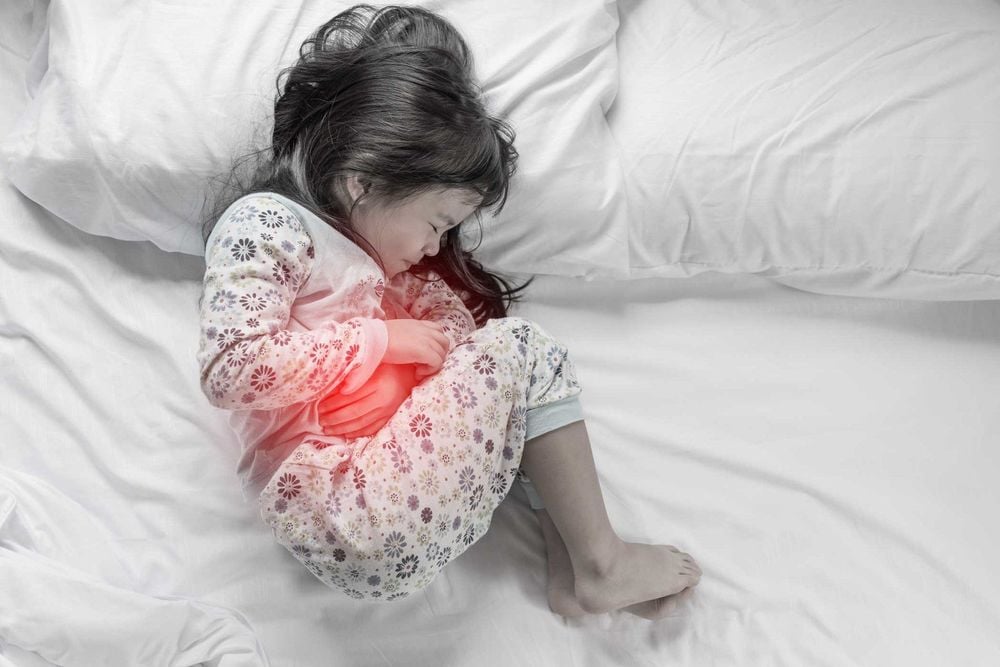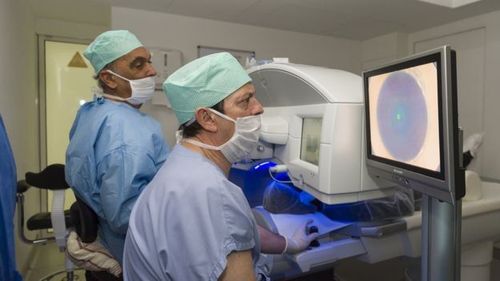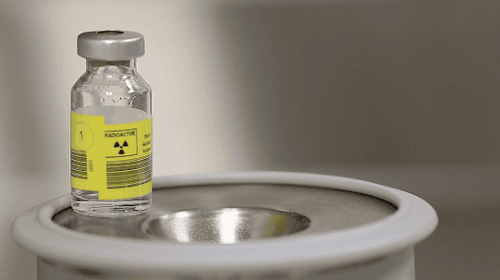This is an automatically translated article.
The article was written by MSc Hoang Lan Van Duc - Doctor of Radiology, Department of Diagnostic Imaging and Nuclear Medicine - Vinmec Times City International General Hospital.Pediatric abdominal ultrasound is a method of examining a child's abdomen by using sound waves to create images, it does not use radiation like X-rays, so there is no harm. Ultrasonography is valuable in physical examination to assess and detect the cause of abdominal, pelvic, and scrotal pain in children.
1. What is the abdominal ultrasound method?
This method uses an ultrasound machine with suitable transducers, during ultrasound, the transducer will be covered with a gel to increase the contact and transmission of ultrasound waves between the skin and the transducer (because the air bubbles between the skin and the transducer will block the transmission of ultrasound waves from the transducer into the body).
High-frequency sound waves pass from the transducer into the body, when passing through each organ and part of the body, they have echoes, then the transducer collects those waves and returns to the computer for analysis. reconstruct the image of the organs and parts that sound waves pass through. The process from when the sound waves are transmitted into the body, the sound waves are reflected and the transducers receive them back, to the processing stage, creating images very quickly, almost instantaneously, so that images of structures can be obtained. , organs with real-time movement, such as peristaltic loops, see gastroesophageal reflux, or blood flow in blood vessels on color ultrasound,..
Ultrasound is simply placing the head The probe is in contact with the skin where the internal organs need to be viewed, so it is non-invasive and painless. On the other hand, it does not use radiation like in an X-ray, so there is no worry about the child being exposed to radiation. These are the things that most parents worry about when sending their baby for an ultrasound.
2. Abdominal ultrasound in children to detect what problems?
Organs that can be examined on ultrasound such as liver, bile, pancreas, spleen, kidney, bladder, uterus and ovaries in female children, stomach and intestines.Some diseases or conditions that ultrasound can detect:
Help determine the cause of abdominal pain in children: common such as inflammation or abscess of the appendix, intussusception, enteritis, dilated bowel loops increase peristalsis in the opposite direction as in intestinal obstruction, cholecystitis,... Helps determine the cause of vomiting in infants or young children such as: intussusception (possibly ileal intussusception, ileocecal intussusception), ..), congenital hypertrophic pyloric stenosis,.. Assess the size of organs such as hepatomegaly, splenomegaly, atrophic cirrhosis, renal atrophy due to renal failure,... Assess the position of organs, such as in visceral inversion, the spleen is located on the right side, the liver is turned to the left, or the kidney is prolapsed into the iliac fossa.. Assess the appearance and location of abnormal fluid in the abdomen. Assess for enlarged abdominal lymph nodes such as mesenteric lymph nodes, retroperitoneal lymph nodes. In addition, when ultrasound can be combined with Doppler to better evaluate and detect abnormalities:
Narrow, blocked blood vessels in the abdomen (such as due to blood clots). Vascular tumors, or congenital vascular malformations. Decreased or loss of perfusion with vortex pattern of the vascular bundle as in ovarian torsion (may be seen in girls), testicular torsion in boys.

Because ultrasound provides real-time images, it can be used by the Physician to guide fine-needle aspiration or biopsy. In addition, ultrasound is used to guide the placement of catheters or other drainage devices. This ensures safety and accuracy.
3. Do you have to prepare anything for an abdominal ultrasound?
For emergency cases such as abdominal pain, vomiting, etc., take the child to the doctor immediately, and if the doctor prescribes an ultrasound for your child, give the child an ultrasound as directed by the staff. medical staff without much preparation.
For some special cases that need to be prepared such as:
Children with suspected congenital biliary atresia will have ultrasound at times of hunger (fasting or sucking for at least 3 hours), after eating or sucking from 15 minutes to 1.5 hours. Female children need to evaluate the uterus and ovaries in case of suspected precocious puberty or malformation, need to drink water to hold urine to have enough urine, during ultrasound. Your doctor will place a transducer in front of your bladder, using your urine-filled bladder as an ultrasound window to view the uterus and ovaries behind.
4. Did your baby have any discomfort during the ultrasound?
Usually your baby will undergo an ultrasound easily, quickly and painlessly. Most ultrasound machines at Vinmec Hospital have gel heating function, so there is no fear of children getting cold or startled, or uncomfortable like when doing ultrasound with cold gel in winter.
In some cases, the child is afraid to see the doctor, or when the child has just taken blood or given an infusion, when he meets any medical staff, he will be afraid and cry, limiting the ultrasound process. At that time, you can comfort your child, give him toys so that he can cooperate with the doctor during the ultrasound, even in some cases, it is necessary to intervene by keeping the child still to do the ultrasound. minus.

5. What are the benefits and risks of ultrasound?
Benefits:
Most ultrasounds are non-invasive (no needles or drugs). Ultrasound is a method of using high-frequency sound waves, not using X-rays, so it is safe and non-radioactive. Ultrasound provides clear images of soft tissue that are not visible on conventional radiographs. Ultrasound can be a little uncomfortable, especially for sensitive people (such as sad blood), but does not cause pain. Ultrasound is the most common examination method, easy to perform, and less expensive than most other imaging methods. Ultrasound is useful in the evaluation of abdominal, pelvic, or scrotal pain in children. Risks: With diagnostic ultrasound, almost no harmful effects to humans have been detected.
6. What are the limitations of abdominal ultrasound in children?
For children who are fussy, uncooperative can make the ultrasound process take longer, and the resulting image is not clear.
Children with bloating and gas make the examination more limited, because ultrasound cannot penetrate the air.
Children with obesity also limit ultrasound, because a lot of fat will weaken ultrasound waves entering the body.
Pediatrics department at Vinmec International General Hospital is the address for receiving and examining diseases that infants and young children are susceptible to: viral fever, bacterial fever, otitis media, pneumonia in children, .... With modern equipment, sterile space, minimizing the impact as well as the risk of disease spread. Along with that is the dedication from the doctors with professional experience with pediatric patients, making the examination no longer a concern of the parents.
Please dial HOTLINE for more information or register for an appointment HERE. Download MyVinmec app to make appointments faster and to manage your bookings easily.














